
Enchanting Waters of Marovo Lagoon
Discover the world's largest saltwater lagoon, Marovo Lagoon, a UNESCO World Heritage Site in the Solomon Islands, where pristine nature meets rich cultural heritage.
Marovo Lagoon in the Solomon Islands is a hidden gem waiting to be discovered. Known as the world's largest saltwater lagoon, it boasts crystal-clear waters that reflect the beauty of the surrounding lush rainforest and vibrant coral reefs. The lagoon is a UNESCO World Heritage Site, celebrated for its diverse marine life and stunning underwater landscapes, making it a paradise for snorkelers and divers. Visitors to Marovo Lagoon can immerse themselves in the rich cultural heritage of the local communities, who have lived in harmony with nature for centuries. Traditional villages dot the coastline, where you can experience the unique customs and crafts of the indigenous people. Friendly locals are eager to share their knowledge and stories, offering a glimpse into a way of life that has remained unchanged for generations. For those seeking adventure, the lagoon offers a variety of activities such as kayaking, fishing, and hiking. Explore the dense rainforests, discover hidden waterfalls, or simply relax on pristine beaches. The serene environment and breathtaking scenery provide a perfect escape from the hustle and bustle of modern life, allowing you to connect with nature in its purest form.
Local tips in Marovo Lagoon
- Bring reef-safe sunscreen to protect the delicate marine ecosystem.
- Carry cash as many local shops and vendors do not accept credit cards.
- Hire a local guide to fully appreciate the cultural and natural highlights of the lagoon.
- Plan your visit during the dry season (May to October) for the best weather conditions.
- Respect local customs and traditions; always ask for permission before taking photographs of people.
Enchanting Waters of Marovo Lagoon
Marovo Lagoon in the Solomon Islands is a hidden gem waiting to be discovered. Known as the world's largest saltwater lagoon, it boasts crystal-clear waters that reflect the beauty of the surrounding lush rainforest and vibrant coral reefs. The lagoon is a UNESCO World Heritage Site, celebrated for its diverse marine life and stunning underwater landscapes, making it a paradise for snorkelers and divers. Visitors to Marovo Lagoon can immerse themselves in the rich cultural heritage of the local communities, who have lived in harmony with nature for centuries. Traditional villages dot the coastline, where you can experience the unique customs and crafts of the indigenous people. Friendly locals are eager to share their knowledge and stories, offering a glimpse into a way of life that has remained unchanged for generations. For those seeking adventure, the lagoon offers a variety of activities such as kayaking, fishing, and hiking. Explore the dense rainforests, discover hidden waterfalls, or simply relax on pristine beaches. The serene environment and breathtaking scenery provide a perfect escape from the hustle and bustle of modern life, allowing you to connect with nature in its purest form.
When is the best time to go to Marovo Lagoon?
Unmissable attractions to see
Guadalcanal Memorial
Explore the Guadalcanal Memorial: A serene tribute to courage and sacrifice in Honiara, honoring the legacy of World War II heroes.
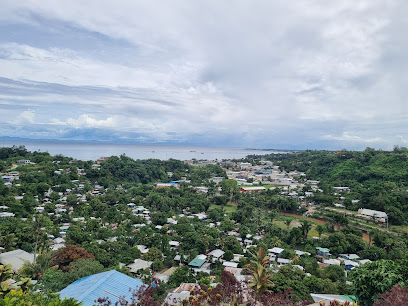
Solomon Scouts & Coastwatchers Monument
Explore the Solomon Scouts & Coastwatchers Monument, a significant historical landmark in Honiara honoring the bravery of World War II scouts and coastwatchers.

Vilu Military Museum
Explore the rich military heritage of the Solomon Islands at the Vilu Military Museum, a must-visit destination for history enthusiasts.
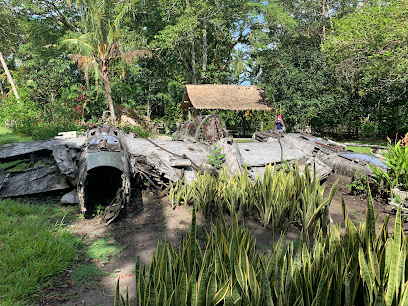
Mahoro Island
Experience the untouched beauty and tranquility of Mahoro Island, a hidden paradise in the Solomon Islands perfect for nature lovers and adventure seekers.

Essential places to dine
Markets, malls and hidden boutiques
Honiara Central Market
Discover the colorful Honiara Central Market, a vibrant hub showcasing local produce, crafts, and the rich culture of the Solomon Islands.
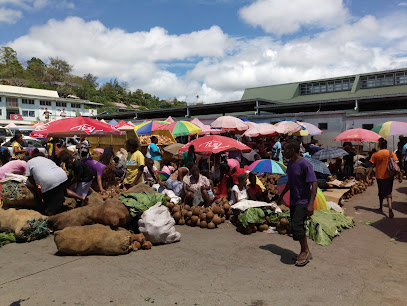
Uepi Island Resort
Experience unparalleled luxury and natural beauty at Uepi Island Resort, an exquisite tropical escape in the Solomon Islands.

Bulk Shop
Experience the essence of Honiara at Bulk Shop, your ultimate grocery destination for local and international delights.

Marovo Lagoon
Explore Marovo Lagoon: A breathtaking paradise of turquoise waters, vibrant marine life, and rich cultural heritage in the stunning Solomon Islands.

Pacific Clothing
Explore elegant local fashion at Pacific Clothing in Honiara's Chinatown, where unique styles meet affordable prices.

Talon Shopping
Explore Talon Shopping in Honiara for a unique blend of local products, souvenirs, and an authentic Solomon Islands experience.

Nautilus Books&Gifts
Discover unique souvenirs and local crafts at Nautilus Books & Gifts in Honiara, the perfect stop for tourists seeking authentic mementos.

BLU Distributors
Discover the perfect mobile devices and accessories at BLU Distributors in Honiara, your essential stop for connectivity in the Solomon Islands.

Solomon Tropical Products
Explore unique island-inspired fashion and local craftsmanship at Solomon Tropical Products in Honiara, a must-visit clothing store for every traveler.
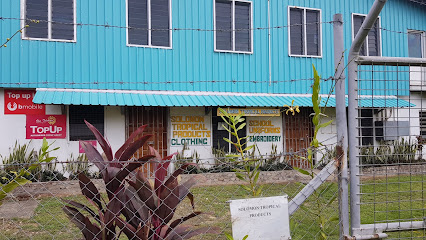
Grass Root Shop
Discover local treasures at Grass Root Shop in Hammock Beach, a charming general store offering fresh produce and unique handmade crafts.

OK Trading ltd
Explore the vibrant local culture at OK Trading Ltd, the go-to general store in Batuna for unique goods and friendly service.

Lel Clothing
Explore the vibrant styles of Lel Clothing in Honiara, where local culture meets contemporary fashion for an unforgettable shopping experience.

DJ Graphics
Explore the vibrant culture of the Solomon Islands with unique souvenirs from DJ Graphics in Honiara.

Solomon Tropical Products - Clothing Manufacturing
Experience the vibrant culture of the Solomon Islands through unique clothing at Solomon Tropical Products in Honiara.

Panatina Plaza
Explore Panatina Plaza in Honiara: A vibrant shopping destination blending local culture and international flair.

Essential bars & hidden hideouts
Heritage Park Hotel
Experience the ultimate blend of luxury and local culture at Heritage Park Hotel in Honiara, featuring stunning views and exceptional dining options.

Coral Sea Resort & Casino
Experience the vibrant flavors and thrilling entertainment at Coral Sea Resort & Casino in Honiara, a premier destination for dining and fun.

King Solomon Hotel
Discover the unique charm and cultural richness of King Solomon Hotel in Honiara, your gateway to the Solomon Islands' beauty and warmth.

Pacific Casino Hotel
Unwind at the Pacific Casino Hotel in Honiara, where comfort meets entertainment in a vibrant tropical setting.

The Coffee Bar
Discover the rich flavors of coffee at The Coffee Bar, a cozy spot in Honiara perfect for tourists seeking a refreshing break.

Tenkai Sushi Cafe
Experience the authentic taste of Japan at Tenkai Sushi Cafe in Honiara, where every dish tells a delicious story.

Honiara Hotel
Experience the perfect blend of comfort and local culture at Honiara Hotel, your ideal base for exploring the beauty of the Solomon Islands.

Agnes Lodge
Discover comfort and adventure at Agnes Lodge in Munda, where stunning landscapes and local culture await your exploration.

Uepi Island Resort
Discover the untouched beauty of Uepi Island Resort, a serene getaway in the Solomon Islands perfect for relaxation and marine adventures.

Mambo Juice!
Discover the vibrant flavors of Honiara at Mambo Juice, a must-visit café for refreshing drinks and light bites.
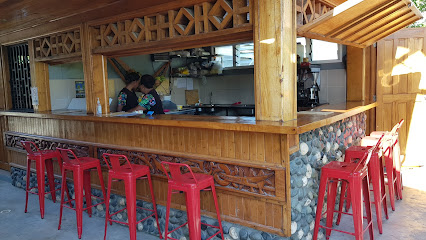
Monarch
Experience the best of Honiara's culinary scene at Monarch Grill, where flavor meets local culture in a vibrant setting.

Marovo Lagoon
Explore Marovo Lagoon: A stunning natural paradise in the Solomon Islands, where crystal-clear waters meet vibrant marine life and rich cultural experiences.

Iron Bottom Sound Monarch Hotel
Experience the beauty and tranquility of Honiara at Iron Bottom Sound Monarch Hotel, a perfect base for exploring the Solomon Islands.

The King of Meatz
Experience the finest cuts of meat at The King of Meatz, Honiara's premier butcher shop deli, known for quality and exceptional service.

Marina Hotel
Discover the charm of Marina Hotel in Noro, where comfort meets the breathtaking beauty of the Solomon Islands.
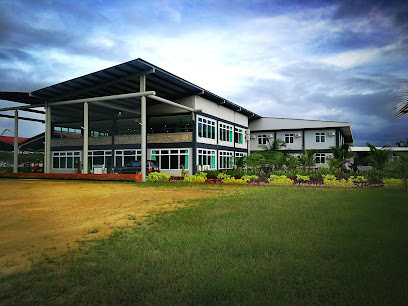
Local Phrases about Marovo Lagoon
-
- HelloKia ora
[Kee-ah oh-rah] - GoodbyeTata
[Tah-tah] - YesIe
[Ee-eh] - NoAe
[Ah-eh] - Please/You're welcomeTaloha
[Tah-loh-hah] - Thank youFakafetai
[Fah-kah-feh-tie] - Excuse me/SorryFakamolemole
[Fah-kah-moh-leh-moh-leh] - How are you?ʻE aha te mea?
[Eh ah-hah teh meh-ah?] - Fine. And you?Māika. ʻA e hia?
[Mah-ee-kah. Ah eh hee-ah?] - Do you speak English?ʻE fakapalagi foki?
[Eh fah-kah-pah-lah-gee foh-kee?] - I don't understandʻE fakamatalaʻi au
[Eh fah-kah-mah-tah-lah-ee ow]
- HelloKia ora
-
- I'd like to see the menu, pleaseʻE fesoasoani ona ou fia vaega, fa'amalie
[Eh feh-soh-ah-soh-ah-nee oh-nah oh-oo fee-ah vah-eh-gah, fah-ah-mah-lee-eh] - I don't eat meatʻE leai ona ou fia mea
[Eh leh-ah-ee oh-nah oh-oo fee-ah meh-ah] - Cheers!Mālo
[Mah-loh] - I would like to pay, pleaseʻE fesoasoani ona ou totogi, fa'amalie
[Eh feh-soh-ah-soh-ah-nee oh-nah oh-oo toh-toh-gee, fah-ah-mah-lee-eh]
- I'd like to see the menu, pleaseʻE fesoasoani ona ou fia vaega, fa'amalie
-
- Help!Fesoasoani!
[Feh-soh-ah-soh-ah-nee] - Go away!Alu i le taeao!
[Ah-loo ee leh tah-eh-ah-oh] - Call the Police!Faʻafesoasoani i leoleo!
[Fah-ah-feh-soh-ah-soh-ah-nee ee leh-oh-leh-oh] - Call a doctor!Faʻafesoasoani i le foma'i!
[Fah-ah-feh-soh-ah-soh-ah-nee ee leh foh-mah-ee] - I'm lostUa ou taulima
[Oo-ah oh-oo tah-oo-lee-mah] - I'm illUa ou ola
[Oo-ah oh-oo oh-lah]
- Help!Fesoasoani!
-
- I'd like to buy...ʻE fesoasoani ona ou fia va
[Eh feh-soh-ah-soh-ah-nee oh-nah oh-oo fee-ah vah] - I'm just lookingUa ou vaʻai
[Oo-ah oh-oo vah-ah-ee] - How much is it?O lea e leai se
[Oh leh-ah eh leh-ah-ee seh] - That's too expensiveO lea e lelei loa
[Oh leh-ah eh leh-leh-ee loh-ah] - Can you lower the price?E leai ona e tatau
[Eh leh-ah-ee oh-nah eh tah-tah-oo]
- I'd like to buy...ʻE fesoasoani ona ou fia va
-
- What time is it?O lea e le taimi?
[Oh leh-ah eh leh tah-ee-mee?] - It's one o'clockO le tasi e le taimi
[Oh leh tah-see eh leh tah-ee-mee] - Half past (10)I le auala (10)
[Ee leh ah-oo-ah-lah (10)] - MorningAo
[Ah-oh] - AfternoonAfiafi
[Ah-fee-ah-fee] - EveningVailoa
[Vai-loh-ah] - YesterdayAnanafi
[Ah-nah-nah-fee] - TodayA lea
[Ah leh-ah] - TomorrowApo
[Ah-poh] - 1Tasi
[Tah-see] - 2Lua
[Loo-ah] - 3Tolu
[Toh-loo] - 4Fa
[Fah] - 5Lima
[Lee-mah] - 6Ono
[Oh-noh] - 7Fitu
[Fee-too] - 8Valu
[Vah-loo] - 9Iva
[Ee-vah] - 10Sefulu
[Seh-foo-loo]
- What time is it?O lea e le taimi?
-
- Where's a/the...?O fea lea...
[Oh feh-ah leh-ah] - What's the address?O lea e le faleta?
[Oh leh-ah eh leh fah-leh-tah] - Can you show me (on the map)?O lea e le fa'ailoa mai (i le mapa)?
[Oh leh-ah eh leh fah-ah-ee-loh-ah mah-ee (ee leh mah-pah)] - When's the next (bus)?O lea e le taimi mulimuli?
[Oh leh-ah eh leh tah-ee-mee moo-lee-moo-lee] - A ticket (to ....)Tiketi (i ...)
[Tee-keh-tee (ee)]
- Where's a/the...?O fea lea...
History of Marovo Lagoon
-
Marovo Lagoon has been inhabited for thousands of years by the indigenous people of the Solomon Islands, particularly the Marovo and the Roviana people. They have developed a rich culture centered around the lagoon, relying on fishing, canoe building, and sustainable use of the lagoon’s vast resources. Archaeological evidence suggests that the lagoon has been a hub of human activity for millennia, with ancient settlements and artifacts found on many of the islands within the lagoon.
-
The first recorded European contact with Marovo Lagoon occurred in the 16th century when Spanish explorers, led by Álvaro de Mendaña, arrived in the Solomon Islands. However, it wasn't until the 19th century that more consistent contact was established, as European traders, missionaries, and settlers began to explore the region more thoroughly. These interactions brought significant changes to the indigenous way of life, including the introduction of new religions, goods, and diseases.
-
During the 19th century, Marovo Lagoon became an important stopover for whalers and traders. The lagoon’s strategic location and abundant marine life made it a valuable resource for these early commercial ventures. Whalers from America and Europe would often stop at the lagoon to rest, resupply, and trade with the local inhabitants. This period also saw the beginning of the copra trade, which would become a major economic activity in the region.
-
In the late 19th and early 20th centuries, Christian missionaries arrived in Marovo Lagoon, marking a significant period of cultural change. Missionaries from different denominations established churches and schools, spreading Christianity and Western education among the local communities. This led to a gradual decline in traditional beliefs and practices, although many aspects of indigenous culture have been preserved and continue to be celebrated today.
-
During World War II, Marovo Lagoon and the broader Solomon Islands played a crucial role in the Pacific theater. The lagoon’s strategic location made it a significant point of interest for both Allied and Japanese forces. The Battle of Guadalcanal, one of the pivotal battles of the war, took place nearby. While Marovo Lagoon itself did not see major combat, it served as a key logistical and support area for military operations, with several wrecks and relics from the war still present in and around the lagoon.
-
After World War II, the Solomon Islands, including Marovo Lagoon, saw a period of reconstruction and development. The copra industry continued to be a major economic activity, but tourism began to emerge as an important sector. The pristine waters, rich marine biodiversity, and stunning landscapes of Marovo Lagoon attracted visitors from around the world. The lagoon was declared a World Heritage site, further boosting its profile as a premier destination for eco-tourism and sustainable travel.
-
In recent decades, there has been a growing awareness of the need to preserve Marovo Lagoon’s unique environment and cultural heritage. Conservation efforts have focused on protecting the lagoon’s coral reefs, marine life, and traditional practices. Local communities, NGOs, and international organizations have collaborated on various projects aimed at sustainable development and environmental protection. However, the lagoon faces ongoing challenges such as climate change, overfishing, and the impacts of tourism, requiring continuous effort and vigilance to ensure its future.
Marovo Lagoon Essentials
-
Marovo Lagoon is located in the Solomon Islands, and the nearest international airport is Honiara International Airport (HIR) on Guadalcanal Island. From Honiara, you can take a domestic flight to Seghe Airport or Sege Airport, which are closer to Marovo Lagoon. Alternatively, you can take a boat from Honiara to Marovo Lagoon, but this can be a lengthy journey, taking up to 10 hours depending on the weather and sea conditions.
-
Once in Marovo Lagoon, transportation options are limited. Boats are the primary mode of transport, and many lodges and resorts offer boat transfers. Canoes and small motorboats are commonly used for getting around the lagoon and visiting various islands. It's advisable to arrange transportation with your accommodation in advance. There are no formal public transport systems in the lagoon area.
-
The official currency in the Solomon Islands is the Solomon Islands Dollar (SBD). Credit cards are accepted in some hotels and larger establishments, but cash is preferred, especially in smaller shops and remote areas. ATMs are not available in Marovo Lagoon, so it's essential to withdraw sufficient cash in Honiara before traveling. Bring small bills for easier transactions.
-
Marovo Lagoon is generally safe for tourists, but it's always wise to take standard precautions. Avoid displaying valuables and be cautious when exploring unfamiliar areas. While there are no specific high-crime areas targeting tourists, petty theft can occur. It's recommended to stay within well-known and reputable accommodation and to travel in groups when possible.
-
In case of an emergency, contact your accommodation staff immediately as they will have the best knowledge of local resources. For medical emergencies, the nearest hospital is in Honiara, which may require a boat or plane transfer. It's essential to have travel insurance that covers medical evacuation. For minor health issues, some lodges have basic first aid supplies.
-
Fashion: Do wear lightweight, breathable clothing suitable for tropical climates. Avoid overly revealing clothing out of respect for local customs. Religion: Do respect local religious practices and sites. Avoid loud behavior near places of worship. Public Transport: Do use boat transport respectfully and follow the captain's instructions. Greetings: Do greet locals with a friendly smile and a handshake. Learn a few phrases in Pijin or the local language. Eating & Drinking: Do try local foods and accept food offerings graciously. Don’t waste food, as it is considered disrespectful.
-
To experience Marovo Lagoon like a local, engage with the community and participate in cultural activities such as traditional dance and music performances. Visit local markets to buy fresh seafood and handicrafts. Consider staying in eco-lodges that offer guided tours by locals who can share their knowledge of the lagoon’s biodiversity and cultural heritage. Always ask for permission before taking photographs of people.
Nearby Cities to Marovo Lagoon
-
Things To Do in Yandina
-
Things To Do in Honiara
-
Things To Do in Tulagi
-
Things To Do in Taro Island
-
Things To Do in Auki
-
Things To Do in Arawa
-
Things To Do in Kokopo
-
Things To Do in Rabaul
-
Things To Do in Alotau
-
Things To Do in Lata
-
Things To Do in Kimbe
-
Things To Do in Kavieng
-
Things To Do in Sola
-
Things To Do in Port Moresby
-
Things To Do in Lae







